It was a cloudy afternoon on our third day in Siem Reap and we were on our way to a massive 12th-century temple in a forest-studded setting. Earlier in the morning when the weather was ideal for photography, we paid a visit to the Roluos group of temples – among the oldest ancient sites in the vicinity of Cambodia’s second-largest city. But we figured the weather gods wouldn’t always be on our side throughout this week-long trip, so we told ourselves we wouldn’t wait until it’s sunny to go out and see Angkor Wat, the big temple and main reason for people to travel from all around the world to this corner of Southeast Asia.
Vonn, the same remork (the Cambodian version of a tuk-tuk) driver that took us to Preah Ko, Bakong, and Lolei that morning, navigated the streets of Siem Reap and headed to Angkor Wat with grey clouds hanging above our heads. Once we left the city proper, we followed a road that cut through a thick forest with tall dipterocarps around us whose branches were so high they provided a canopy along the mostly straight course. Sitting quite comfortably on the back seat of the remork, I couldn’t help but recall my first jaunt to the Angkor Archaeological Complex 11 years prior to this trip. Back then, I pedaled my way from the modest hostel where I stayed in the city to the major ancient temples in the north. Based on my rough calculation, I must have cycled around 30 kilometers or more on that one day alone when I went to Angkor Wat, Bayon, and Ta Prohm. My present-self finds it hard to believe, but I can assure you that it did happen.
As my mind began drifting further down memory lane, my olfactory senses caught something pleasant. What is this nice smell? If you have watched The Nightmare Before Christmas and remember the scenes where Jack Skellington accidentally enters the Christmas world filled with colors and snow, that describes how my brain was at that moment: it suddenly got busy and was filled with curiosity.
What’s this? What’s this?
There’s a sweet scent everywhere.
What’s this?
It’s nice beyond compare.
(Here’s a link to the original song.)
It was only a day later when we found out what actually perfumed the air. At Baphuon, we saw tiny dipterocarp flowers strewn all over the causeway. I picked one up, sniffed it, and its vanilla-y aroma exactly matched what we had smelled during our remork ride the day before.
Despite the persistently cloudy weather, arriving at Angkor Wat still gave me a sense of excitement like how it did back in 2011. It’s really hard not to feel awestruck by it. From afar, visitors can already see the iconic spires of the centuries-old monument’s central sanctuary. But to get there, first there is a moat to cross. Measuring 200 meters wide with a perimeter of more than 5 kilometers, this is by no means an ordinary moat as it was created to symbolize the cosmic ocean in Hindu cosmology. Customarily, the sandstone causeway in the west is the main approach to reach the outer enclosure of the temple compound. However, since it was closed during our visit due to ongoing conservation work, we and other visitors had to take a temporary pontoon bridge directly to the south of it instead. This proved to be an exciting way to cross the moat as the floating pieces of the makeshift footbridge went up and down following the movements of the water.
If the entirety of Angkor Wat were its own country, it would have been more than three times bigger than Vatican City – the world’s smallest independent state – and only slightly more compact than Monaco – the second smallest sovereign state on the planet. It’s easy to see why this ancient Hindu temple compound is often considered the largest religious monument still standing today. But this feat wouldn’t have been possible without a king’s ambition of an equal proportion.
In 1113 CE, during a period of time that saw the decline of the Khmer Empire’s power, a new king ascended the throne taking the official name Suryavarman II. He soon reasserted Khmer influence in the region, as well as engaging with Champa, the empire’s neighbor to the east which was a loose confederation of Hindu polities that was both an ally and a rival – depending on circumstances.
Following the tradition of building a state temple carried out by previous kings since the beginning of the Khmer Empire, Suryavarman II commissioned his own. While state temples were customarily grand and imposing, the ambitious king pushed the limits and commissioned a megaproject that would eventually take shape as Angkor Wat. Not only was the scale of it much bigger than that of Bakong, Pre Rup, or Baphuon, but curiously the new state temple of the empire was dedicated to Vishnu, not Shiva as was the norm.
On the other side of the moat, the outer enclosure of the compound stood before us. Near the Western Gopura – the main entranceway to enter the temple – were balustrades, each decorated with seven-headed naga serpents at its ends. As I took the short flight of stairs to the gopura, Angkor Wat’s iconic sanctuary immediately came into view again, this time framed by the gateway’s door. This must be among the most dramatic approaches to an ancient monument, and it gave me the same feeling as the sudden reveal of the Treasury in Petra.
Soon afterward, we walked down the 350-meter cobbled pathway with naga balustrades on both sides, probably built to keep visitors focused on taking a straight line to the central structures. Halfway through, there were two small edifices – purportedly used as libraries in the past – that enticed curious visitors to check them out. As we arrived at the inner enclosure, we were treated to even more elaborate stone carvings created by the skilled hands of Khmer sculptors nine centuries ago. Lion statues as well as floral patterns adorned the staircases and doorways. But probably the most emblematic decoration of all is the female devatas – sometimes confused with apsaras. Although both are celestial beings, the latter is usually depicted as a dancing nymph, while the former takes the form of a standing deity with different styles of headdress.
Unlike most visitors who went straight from the inner enclosure to the sanctuary, also known as the Bakan, we first opted to circumambulate the outer galleries where the walls at the four cardinal directions are covered with intricate bas-reliefs. Taking inspiration from the Hindu epics of the Mahabharata and Ramayana, other sacred texts known as the Puranas, as well as from Suryavarman II’s military campaigns, the friezes are a testament to the ancient Khmer people’s craftmanship. Among the stories depicted on this part of Angkor Wat are: the Battle of Kurukshetra, the final and devastating war between the Pandavas and the Kauravas (who were cousins) which makes up more than a quarter of the Mahabharata; the different hells and heavens in Hinduism; Krishna (an avatar of Vishnu) defeating asuras (a class of celestial beings in Hinduism often associated with negative traits), which was a 16th-century addition to a previously unadorned section of the inner enclosure; and the Churning of the Ocean of Milk (Samudra Manthana), probably among the most celebrated Hindu stories in mainland Southeast Asia – another version has been put on display at Bangkok’s Suvarnabhumi Airport.
James and I took our time marveling at and taking photos of the friezes showing the scenes of the churning of a cosmic proportion where asuras and their antitheses, the devas, using the mythical Mount Mandara as a churning rod and the serpent Vasuki as a rope coiled around the mountain, work together to extract amrita (the elixir of immortality) from the ocean. Vishnu, in the form of his tortoise avatar Kurma, sits atop the mountain to help it sink. As a result of this, not only did they manage to get the elixir, but other creatures and objects also emerged, including Lakshmi (the goddess of wealth), apsaras, Airavata (the multi-headed elephant that would become the mount of Indra, king of the devas), and Kalpavriksha (a wish-fulfilling tree) – the object I’m most familiar with since it was often incorporated into the relief panels of ancient Hindu temples in Java.
Once we completed the counter-clockwise circumambulation around the outer galleries, we headed to the Bakan, a towering central structure of Angkor Wat that gives this compound its iconic appearance. For some reason, the stairs to reach the sanctum of many Khmer temples were stacked at a hair-raising inclination, and the ones at the Bakan were no exception. I remember having to carefully take one step after another when climbing it on my first visit, and it was no different on my second time. Once up there, the views of the lush plains around Angkor stretched as far as the eye can see, a vantage point probably reserved for the king and a few other people in the court. Perhaps Suryavarman II once stood here and had to pinch himself for having successfully built something so impressive.
Unfortunately, the ambitious king didn’t live long enough to see the completion of Angkor Wat.

The Churning of the Ocean of Milk (clockwise from top left): the asuras holding Vasuki’s heads; a row of asuras; Vishnu atop Mount Mandara; the devas holding Vasuki’s tail; a row of devas
During his reign, the Khmer king forged an alliance with Champa, a fellow Hindu kingdom that controlled the coastal regions in what is now central and southern Vietnam. Although relations between the two had not always been amicable, Suryavarman II convinced the crown prince of Champa to join his fight against Dai Viet (Đại Việt), a sinicized nation at that time ruled by the Lý Dynasty based out of what is now Hanoi in northern Vietnam. Multiple joint efforts by the Khmer Empire and Champa to defeat their adversary from the north often ended up in failure – at best they were only marginally successful when they managed to capture just a few Dai Viet areas. When the Cham prince ascended the throne and took the title Jaya Indravarman III, he made a U-turn and decided to make peace with his northern neighbor, a policy that angered Suryavarman II.
The refusal from the king of Champa to join subsequent Khmer military campaigns against Dai Viet led to Suryavarman II’s decision to attack Vijaya, the capital of the mandala of Champa. In the following years and decades, relations between the two Hindu kingdoms turned from sour to completely hostile toward each other. Despite the multiple attacks on Champa and its capital launched by the Khmer army, the latter was at one point defeated by the Cham people who managed to raid Angkor and therefore subjugated the Khmer Empire. It was during this period of instability that Suryavarman II died, probably in one of the episodes of the bloody conflict between the two neighbors.
Angkor Wat was only finished decades after Suryavarman II’s death, but the likeness of the king had fortunately been immortalized on one of the galleries of the temple before his demise. This allows us, modern-day visitors, to see what is in fact the first ever depiction of a Khmer king – previous kings were only mentioned in inscriptions.
The scale of Angkor Wat, its fascinating history, and the plethora of stories carved along its walls and towers ensured a second and third visit from us during our week-long stay in Siem Reap, including one day when the sun was shining brightly. However, while a lot is known about the Khmer Empire, its rulers, and the magnificent temples it left, the same thing can’t be said about Champa. There is a lot less information on the latter (especially in English) compared to the abundance of articles written about the ancient Cambodians. That is why four months after this trip, we decided to go to a place in central Vietnam to see the vestiges of Champa around its former capital of Vijaya. And that is where I’m taking you next.
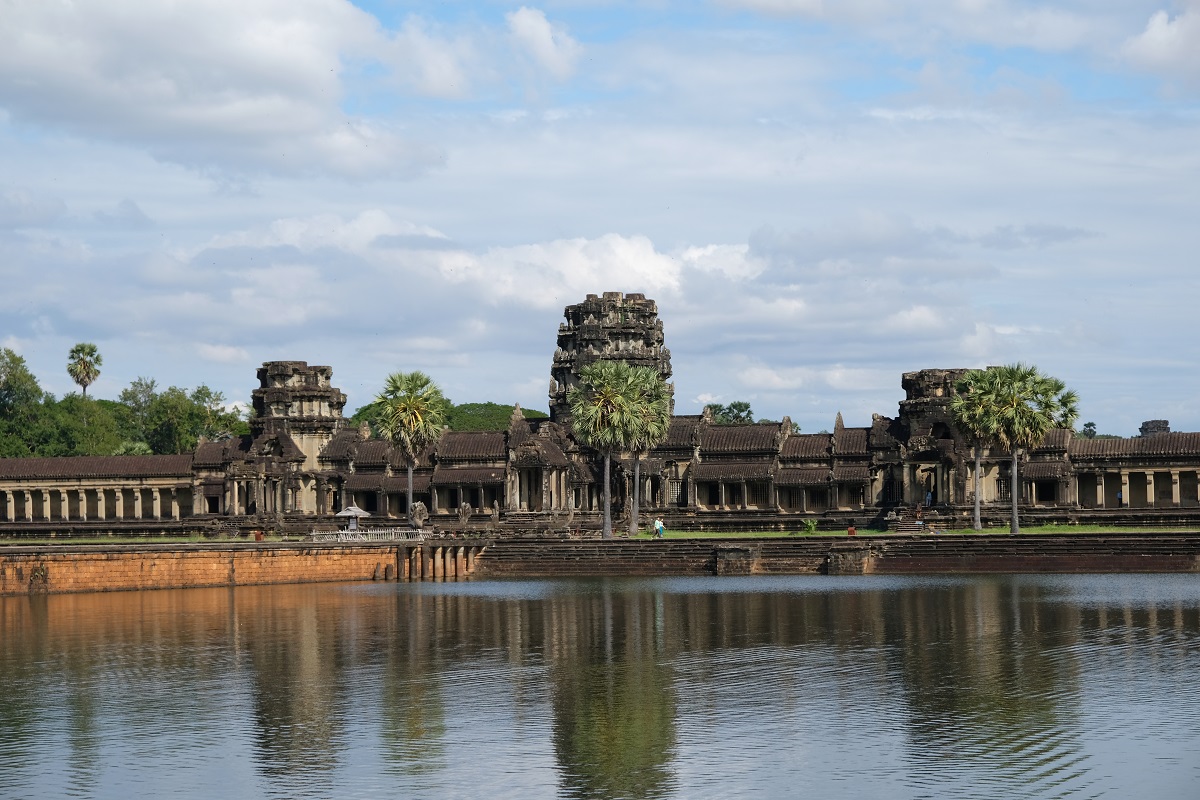

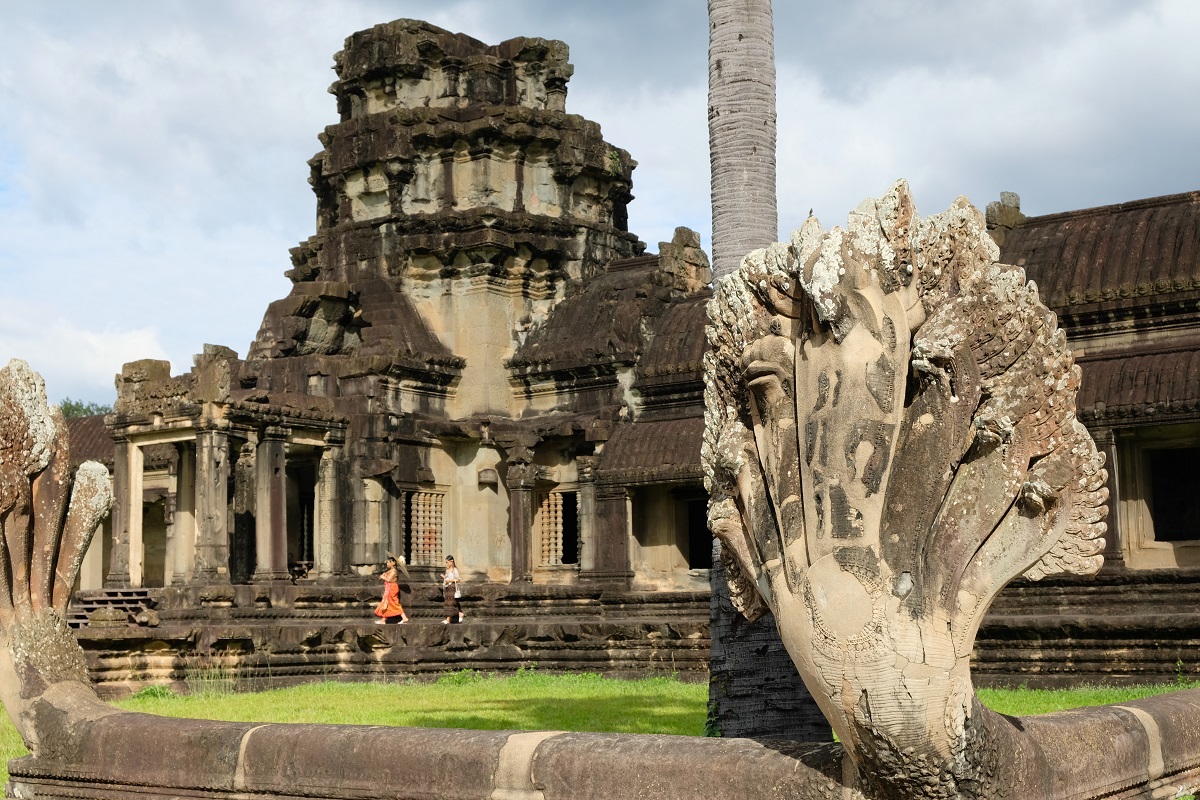
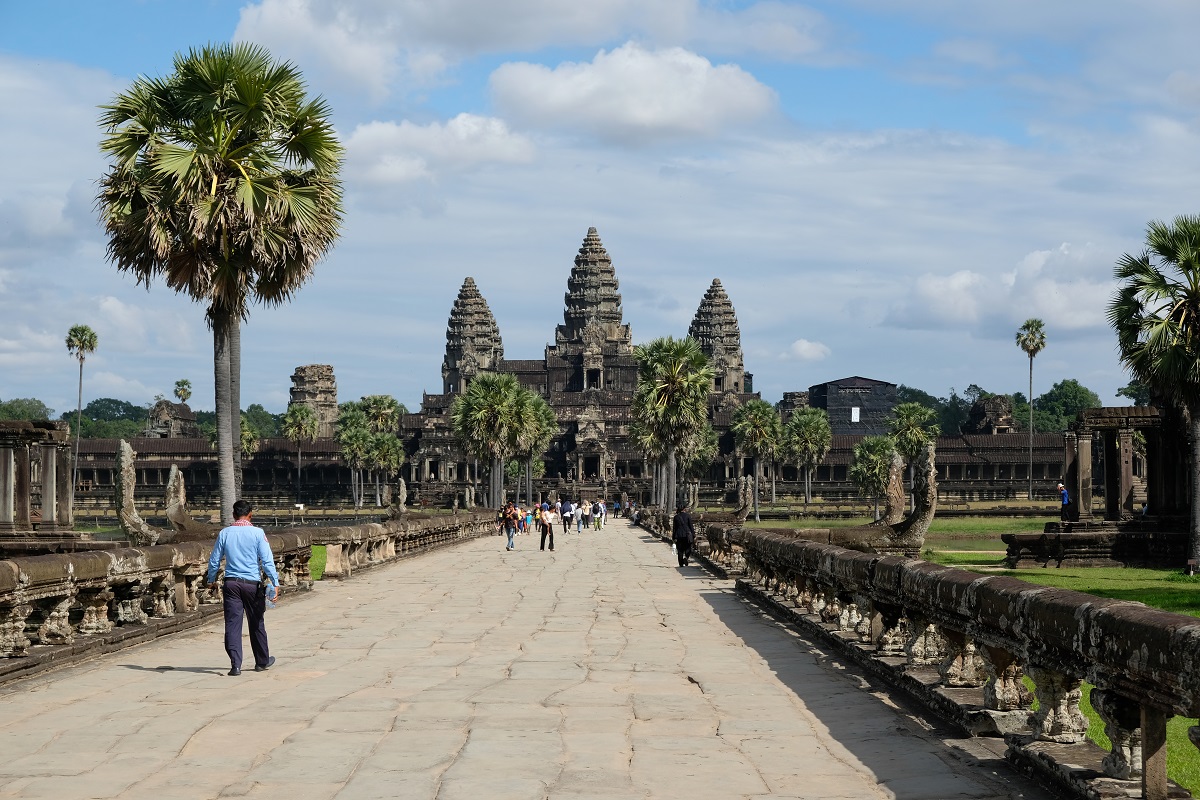
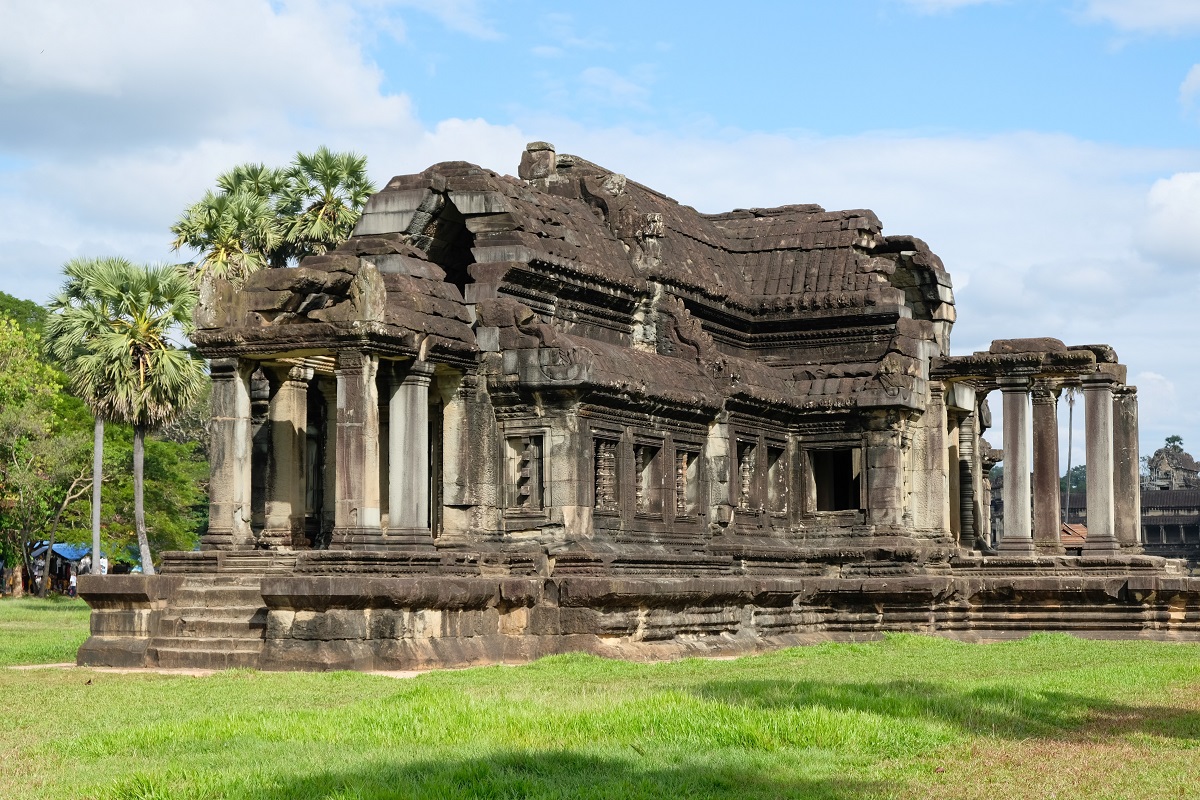
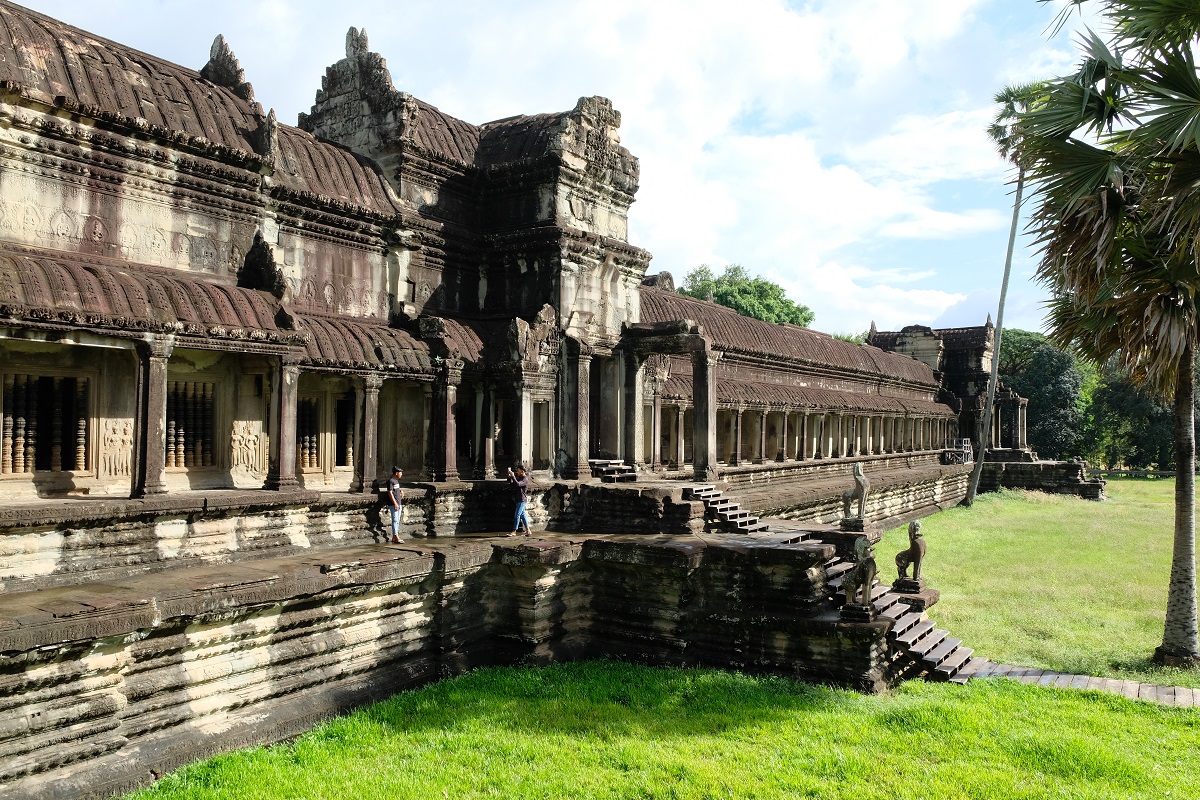

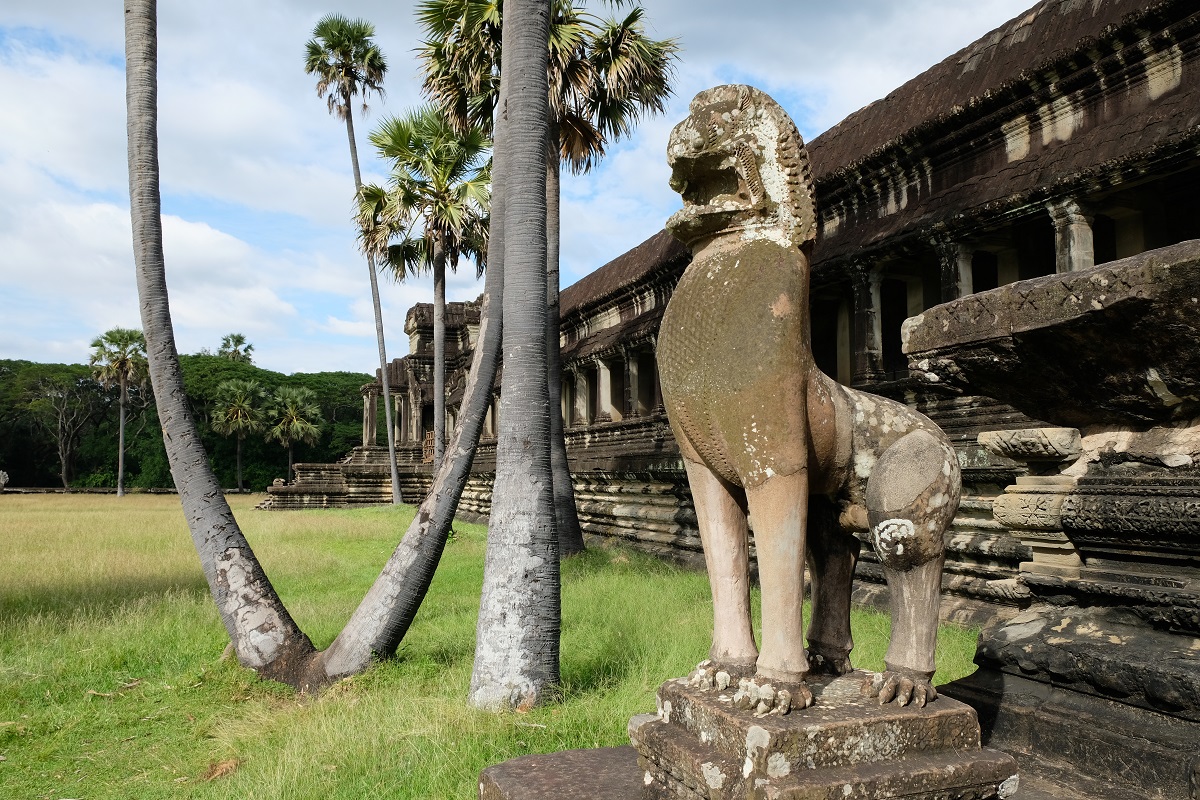
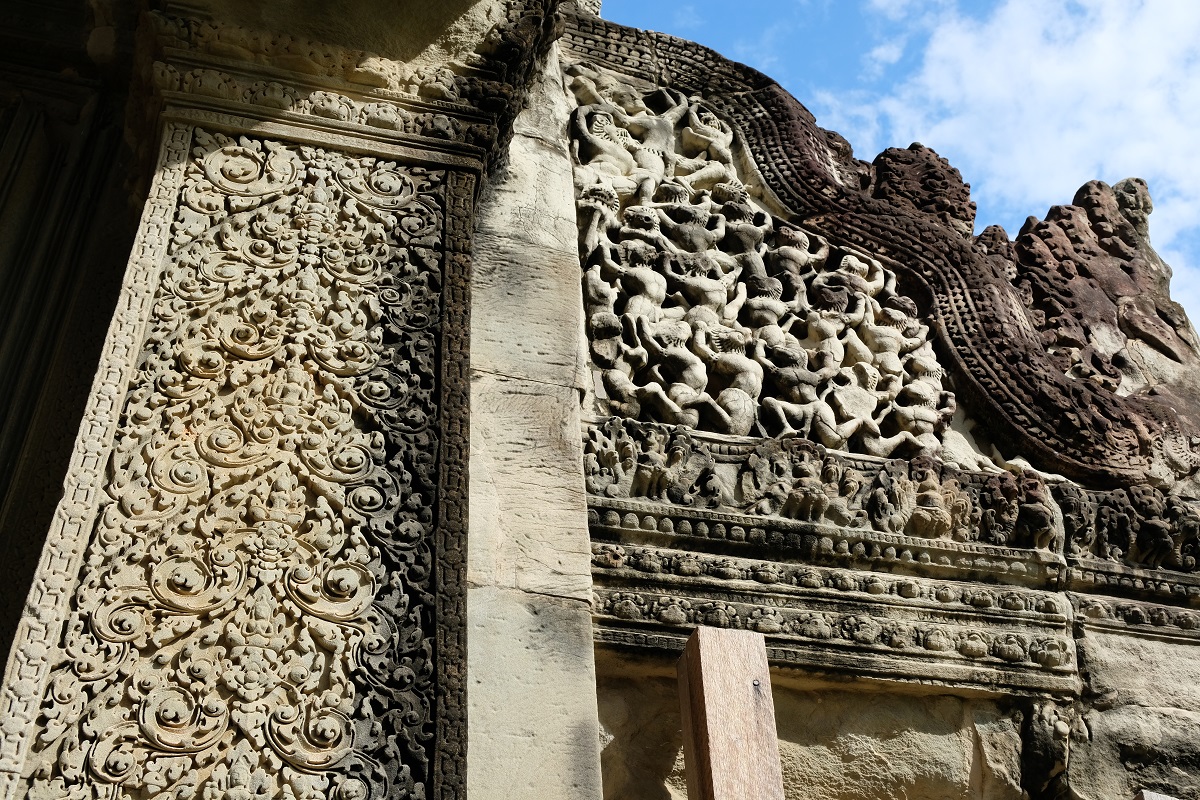
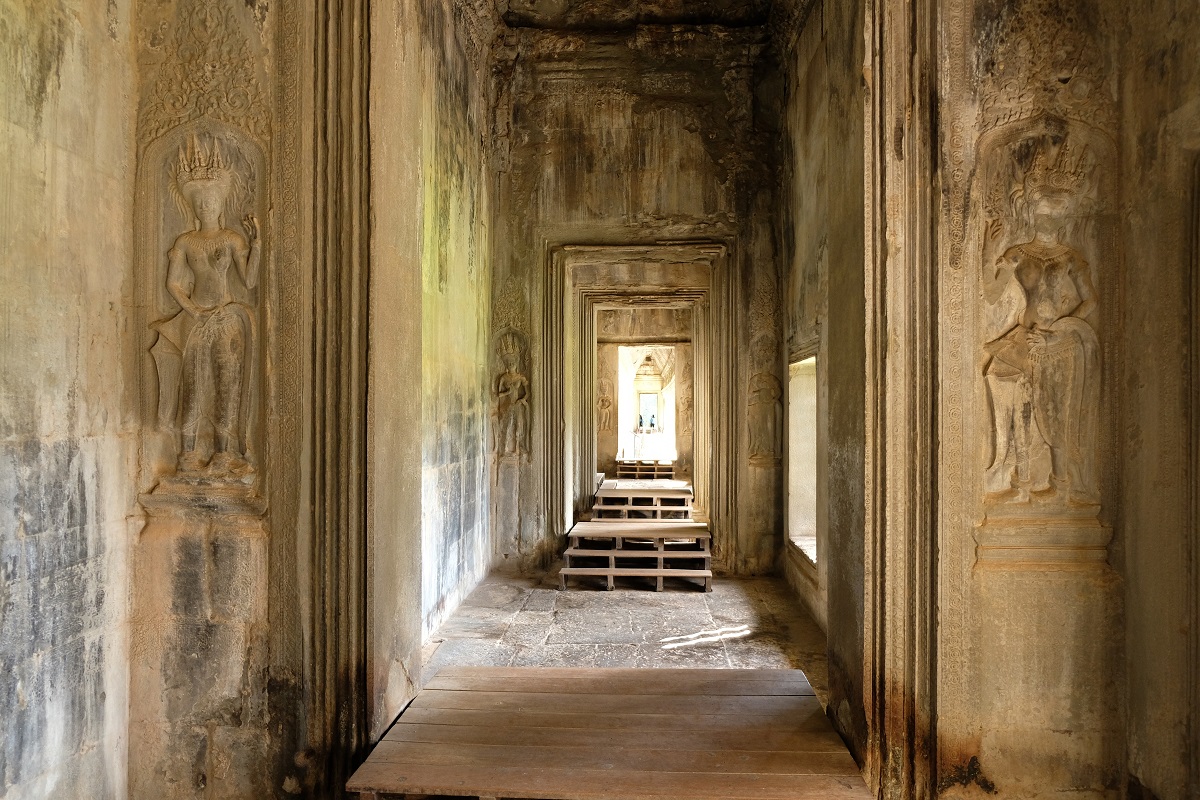




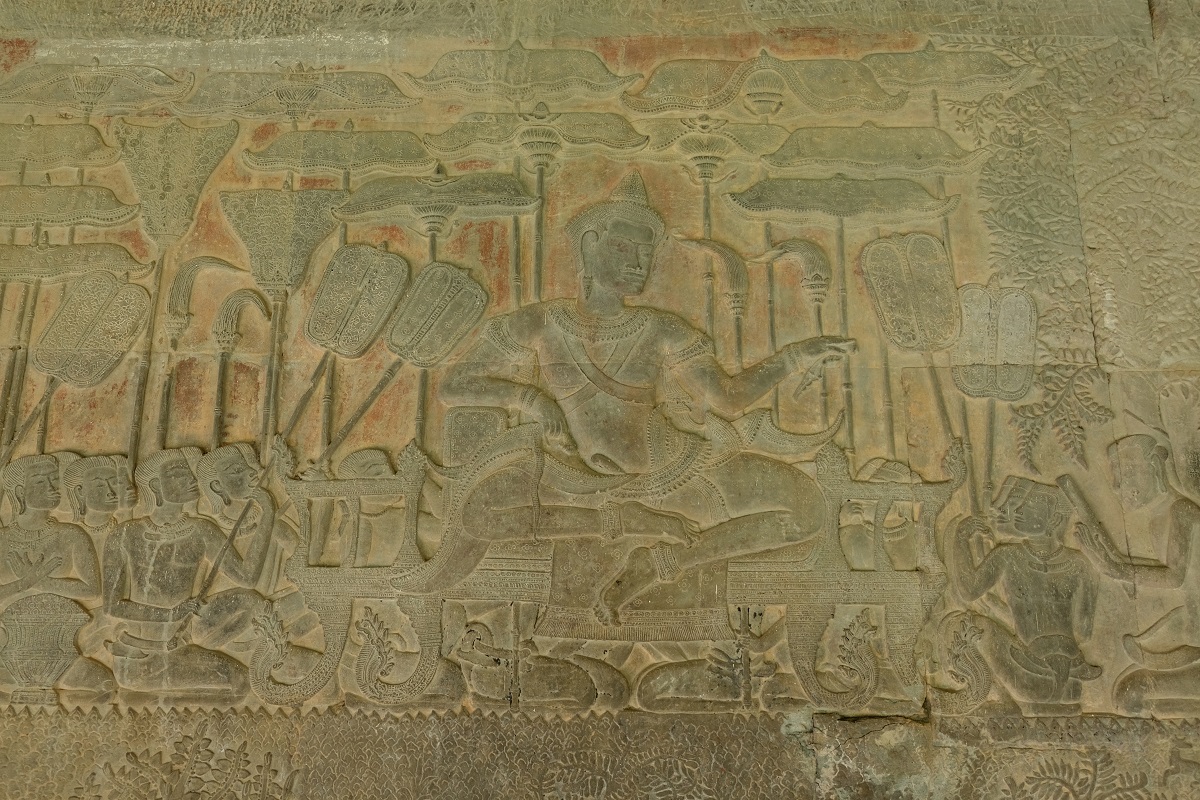
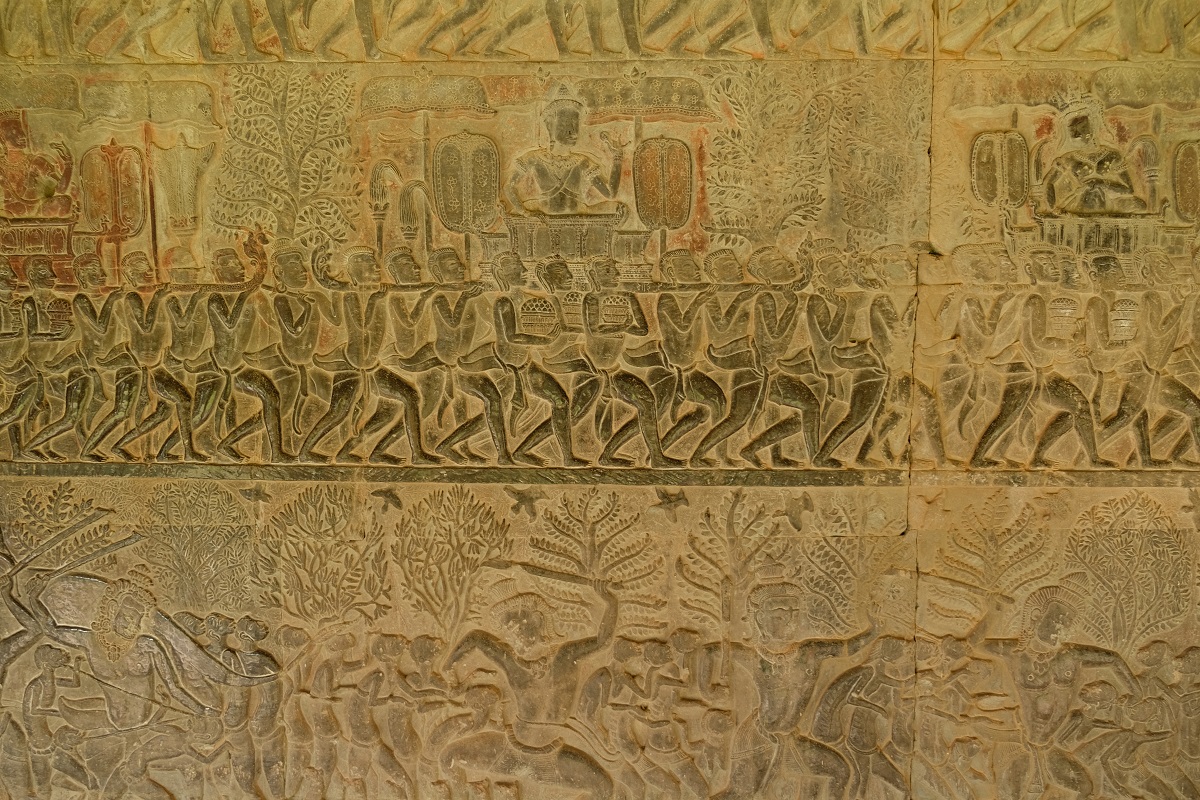
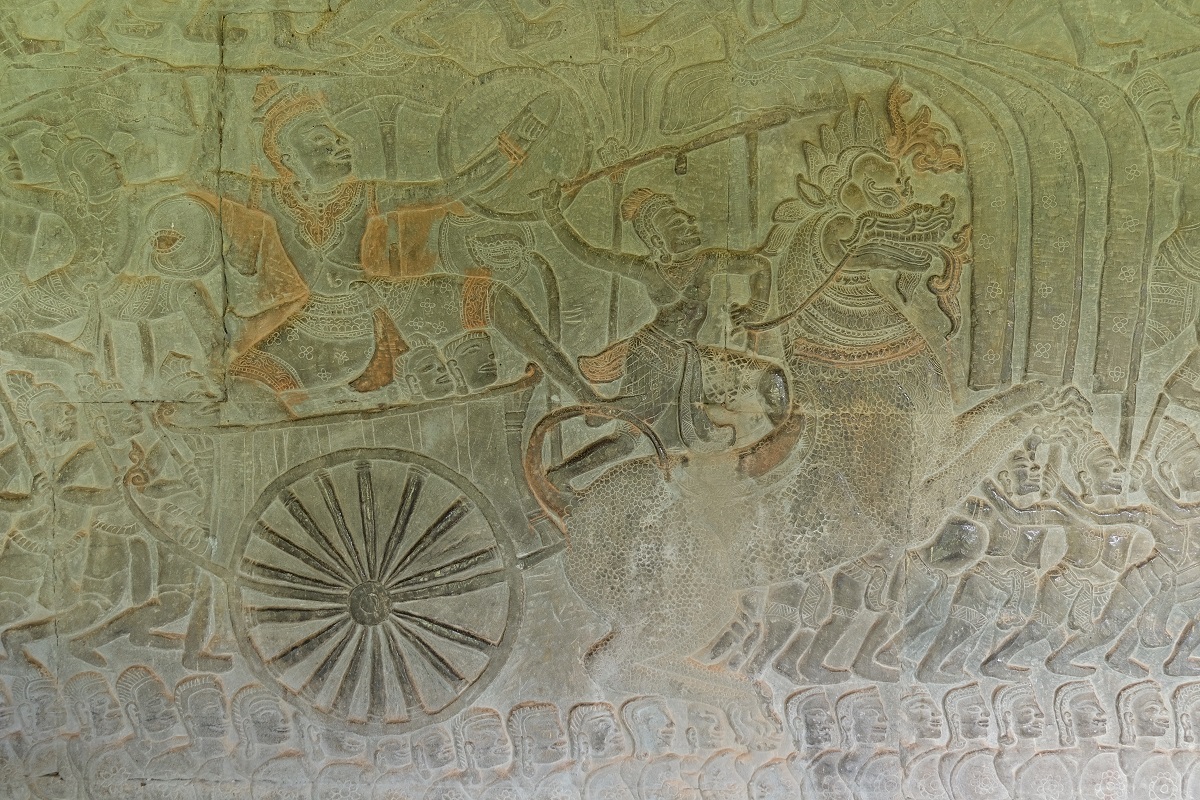








Well, I think I should just link right to your blog instead of finishing my own post on Angkor Wat that is in process! I got mired down in my research today, and I can see that not only have you thoroughly studied the history, but you seem to have been paying more attention while there and also taken magnificent photos all along the way. I was blown away by the entire Angkor complex, and Angkor Wat in particular, but my takeaways are mostly feelings and deep admiration, something that is harder to share. I find that the grander a site is, the fewer photos I seem to take and the less I pay attention to a guide in the moment because I get so carried away by just being there and absorbing it all. It’s nice to have good listeners and documenters like you to fill in the blanks!
LikeLiked by 3 people
I think on this second visit to Angkor Wat I did pay more attention to the details I wasn’t aware of back in 2011. That happens to me all the time, even to ancient temples in Java. Historical facts about a place won’t differ too much from one article to another. It’s our personal experiences that make all the difference. I’d say you should still write that post although feelings and admiration are indeed harder to articulate, which is why any blog post written out of it usually ends up being very interesting to read.
LikeLiked by 1 person
Bama, you have such great descriptions of the sites, sounds and smells of Angkor along with details of the fascinating history. Thanks for taking me back to Angkor, and now I look forward to Vietnam! I haven’t visited Champa nor do I know much about it! Maggie
LikeLiked by 1 person
Those three visits to Angkor Wat from this trip alone really helped me immerse myself in the atmosphere of this magnificent ancient temple, which in turn gave me inspiration to write this post. As for Champa, its most famous ruins are located not too far from Hoi An, which I went to in 2017. But this time I visited those that receive far less tourists near a city called Quy Nhon.
LikeLiked by 1 person
Oh, I remember hearing about ruins near Hoi An, but we were on a rushed trip that we didn’t have time to visit.
LikeLiked by 1 person
Time to plan a second visit then! 😀
LikeLiked by 1 person
I think so!!
LikeLiked by 1 person
We’re just back from here….fabulous place…
LikeLiked by 1 person
Isn’t Angkor Wat one of the most impressive ancient temples in the world? I’ll have to check out some more stories from your recent trip to Cambodia.
LikeLiked by 1 person
Yes indeed it’s fabulous. Wonderful experience to visit and wander around
LikeLiked by 1 person
Absolutely perfect Bama! You have given us such a great overview of the history of this amazing place! It is such an awesome place, defintely a wonder of this world we live in!
LikeLiked by 1 person
And even more amazing is the fact that this was built centuries ago. Sometimes when visiting places like this I often wonder how life was like in and around the temple compound during its heyday.
LikeLike
Agreed. I am always in awe of these huge amazing places and how they were built with supposed little technology.
LikeLiked by 1 person
What a wonderful tour, Bama! Thank you for taking us along this visit with you and James.
Angkor Wat – and Southeast Asia – is on my wishlist to visit one day and I can only imagine the sights and sounds and smells in person. Your pictures look amazing and I love getting a view of the architecture, sculptures and carvings and some of the interior gallery spaces you often don’t see in the tourist highlights.
The downpour looked intense but made the place look extra cool.
I’ll also have to watch A Nightmare Before Christmas with T one day.
LikeLiked by 1 person
I know I’m biased, and I haven’t been to many parts of the world, but to me Southeast Asia always feels like home, regardless the country. The sights, sounds, and smells are indeed among the things I find most appealing about this region.
Showing more than what typical tourist highlights would is in fact part of the fun in blogging. Most things are more impressive and magnificent when they’re seen with our own eyes, although there are a few that look better on brochures.
Oh I’ll be really curious of T’s reaction when he watches that movie one day!
LikeLiked by 1 person
It definitely feels like a great place of the world and a great reminder that home is where the heart is! You’ll have to share some food and drink photos too from your trip! 😊
LikeLiked by 1 person
I will eventually get to those food posts. But first, history. 😄
LikeLiked by 1 person
Bama, an interesting and thorough post on one of my favorite ruins. Your summary of the historical side is also welcome. This post dovetails with something I’ve been working on lately which is a post on why this civilization “disappeared.” I’ve found that there’s lots of incorrect info out there about Angkor. Recent archeological digs and LIDAR surveys found that the city size actually grew and got smaller over its history and it took hundreds of years for the city to actually cease to exist as a political and religious center. And most importantly, it never “disappeared,” but only changed over the years. Also, it wasn’t “discovered” by Europeans, but had existed for centuries and everyone in SEA knew about it.
Interesting stuff. And like you, I’ll pay a lot more attention to the details on my next visit. ~James
LikeLiked by 1 person
Thanks for sharing, James! Everything you said is absolutely correct. Thanks to LIDAR we now know the actual size of Angkor, for it allows us to see man-made structures which are otherwise hidden from plain sight today. I think it’s a bit silly to argue that the Khmer civilization completely disappeared just because they stopped building grand temples. Europeans merely introduced places like Angkor to the audience back home, which at that time happened to be prominent colonial powers with colonies across the globe.
LikeLiked by 1 person
A place that I wish to visit someday. Is it still possible to cycle there? Sounds an exciting way to visit a place.
LikeLiked by 1 person
Yes, cycling around the Angkor Archaeological Complex is still very much possible. It’s a great way to soak in the ambiance – at times all you hear is just the sound of nature.
LikeLiked by 1 person
Ahhh.. I would love to pick your brain on Angkor Wat. I hope we can meet up someday when you are back in Jakarta.
LikeLiked by 1 person
Yes, we should definitely meet in Jakarta!
LikeLiked by 1 person
Awesome!! That will be great 😊
LikeLiked by 1 person
Thanks for virtual tour. I particularly enjoyed the pictures of the details of sculptures and carvings with the colours. (Suzanne)
LikeLiked by 1 person
Many ancient temples were actually painted back in the days when they were still used as a place of worship. However, I do prefer their worn-out appearance today where the original stones are exposed.
LikeLike
It’s funny to look back at how we used to travel during our younger years. It’s pretty impressive that you cycled that much when you visited this complex just over a decade ago. It must have been nice to return to Angkor Wat, especially given how vast it is. Sorry to hear that the weather gods weren’t too kind though. That torrential downpour looked rough from your pictures!
LikeLiked by 1 person
Sometimes I can’t believe how much different my traveling style was more than 10 years ago. As for the cycling part, I remember at one point when I was going back to the city, I felt extremely exhausted. And I could only bike around so much I had to stick to the so-called “small circuit”. Last December, finally I was able to see the temples along the “grand circuit”. I don’t think I would’ve been able to do the latter back then by bike. That was some seriously heavy rain!
LikeLiked by 1 person
Maybe it’s time for me to revisit Siem Reap and Angkor Wat. I wouldn’t mind cycling there now that I’ve taken up cycling. I just hope they have improved the roads otherwise I’ll end up eating dust along the way 😅
LikeLiked by 1 person
The road condition last December was much better than how it was in 2011. Although this time I decided to take a remork, I would still recommend going around the entire archaeological complex by bike for anyone fit enough to do it.
LikeLiked by 1 person
What a wonderful ‘re-visit’ this was for me, Bama. Your research is, as always, astounding. Angkor Wat definitely lived up to my expectations when I visited. So sad that the king who envisioned it never saw its completion. I am super impressed that you cycled around the temples on your first visit. Looking forward to being taken to central Vietnam next. It is a country I’ve never been to, so it will be wonderful to see it through your eyes.
LikeLiked by 1 person
Glad this post brought you back to Angkor Wat, Jolandi. Even for me, who grew up seeing magnificent Hindu and Buddhist temples in Java, this Khmer architectural wonder truly was a sight to behold. I think the main reason why I decided to rent a bike back then was because it was the cheapest option to explore the temples. Vietnam is a very interesting country. It’s never high on my travel list, but for some reason it always manages to make me go back over and over again.
LikeLiked by 1 person
I always marvel at the ability of countries to do that.
LikeLiked by 1 person
Spectacular research Bama, and wonderful photos. It brought back memories, but also made me wish you and your current knowledge had been there with us to explain things a little. We had a very dense guide book. We abandoned it – too many words – and just enjoyed exploring the site.
As for the protagonists of this story I’m reminded of a saying that goes something like “Old men make wars for young men to die in.” Was it ever thus.
Alison
LikeLiked by 1 person
Thanks Alison! Actually a few weeks after that trip to Cambodia, James showed me an article about murals at Angkor Wat that had long faded and now can only be seen using a certain technique of digital imaging. One of them depicts a set of traditional musical instrument that in a way reminds me of what we have here in Java. The thing about places like Angkor Wat is they’re so massive we will keep uncovering “secrets” using the most recent technology. You know, I have a similar thought about how many kings and rulers have exploited their own people to achieve their ambitions.
LikeLiked by 1 person
Fabulous, Bama! Your posts always make me feel like I’m right there with you, and your photos are beyond stunning – I love that your capture the details. Kellye
LikeLiked by 1 person
Much appreciated, Kellye! The details are in fact one of the main reasons why I love visiting ancient temples like Angkor Wat. It never ceases to amaze me to think that those fine carvings were created hundreds and thousands of years ago.
LikeLiked by 1 person
Your posts are always impressive and chock full of historical details plus pictures. This temple is so amazing, it’s on my bucket list. I’m amazed at all the details in the carvings. Is it easy to find transportation to the temple from a hotel? And do you think a guide would be helpful (or I could just print out your blog entry).
LikeLiked by 1 person
You really should visit Angkor Wat, Matt! Since this massive temple is the main reason for people to go to this part of Cambodia, it will be very easy to get there from wherever you stay. In our case, a few remork drivers were always there right in front of our accommodation. So anytime we wanted to see the temples, we just walked to one of them and told the driver where we wanted to go. In the end, we stuck to one particular person though.
LikeLiked by 1 person
Bama, if you are not a writer, you should be. It is such a delight to read your posts. I hope you are enjoying your vicarious visit to Mesopotamia as well. 🙂
LikeLiked by 1 person
Thank you for the encouragement! I’ve been thinking of that for years. But I haven’t got the chance (or the gut?) to do it. I immensely enjoy traveling vicariously to ancient Iraq through your posts! Speaking of which, I should check out the latest updates.
LikeLike
As you know, I have longed to visit Angkor Wat since I was in middle school, so being able to go there last December three times over the course of our week in Siem Reap was truly a dream come true. It did not disappoint and I was just blown away by the scale and the grandeur of it all. Had we budgeted in an extra day, I would not have minded going back to the complex for a fourth time! Your explanations on the ancient Khmer kings and who constructed which temple in this series could be compiled into a useful guide for Angkor as a whole. And I think it’s clever that you’ve used the on-and-off rivalry with Champa to segue into the first post from our most recent trip to Vietnam.
LikeLiked by 1 person
I remember many years ago you asked me about what I thought of Angkor Wat was compared to Borobudur, since you had only been to the latter. I hope my illustration back then did this massive Khmer temple compound justice. You know what? I wouldn’t mind a fourth visit either. Maybe next time, when we return to Siem Reap to check out even more ancient sites that we didn’t get to see last December. I feel like I had to somehow introduce Champa along the way, since it played an important role in the history of the Khmer Empire.
LikeLiked by 1 person
You make it feel like we are walking alongside you. How did you get all these great photos without the tourist in them or is this normal? Fantastic!
LikeLiked by 1 person
The fact that I went last December probably helped, as mass tourism was only beginning to rebound and China had yet to ease the restrictions it imposed to its citizens to travel abroad.
LikeLike
You bring insight into the marvel of Angkor Wat I’ve never known, Bama. The mind and scope of creativity of the King and the country’s people are even more impressive after reading and seeing your photos ~ having been there; you make me want to visit again to see all that I have missed. The images are incredible, and you have created a peaceful sense of Angkor Wat, an almost eerie feeling of it being the most immaculate ghost town ever 🙂 My favorite photos were of the sudden torrential downpour you caught with your lens… magic! Cheers to your travels and the sharing of the history makes your posts so special.
LikeLiked by 1 person
Much appreciated, Randall. There are places in the world that deserve a second, a third, and even a fourth visit, and Angkor Wat is definitely one of them. The scale of this temple compound is just so impressive it’s impossible to see everything in one go. I hope one day you’ll get the chance to return to Cambodia. That rain was so sudden, but I’m glad I was already at the upper level of the Bakan, not on my way to reach it!
LikeLike
A fitting finale to your (pre-Cham) Siem Reap travelogues Bama! Angkor Wat sits up there with Hampi and Machu Picchu on my list of most atmospheric places. You capture its history and stories brilliantly, as always. Thank you for a great read. This series almost felt like a return to Cambodia…I kept revisiting my own posts and photos in between 🙂
LikeLiked by 1 person
Madhu, I agree with you about putting Angkor Wat and Hampi on that list. Really need to make my way to Machu Picchu sooner than later! I can totally relate with what you said about revisiting our own photos especially those taken at places that left really deep impressions on us. I still do that from time to time.
LikeLike